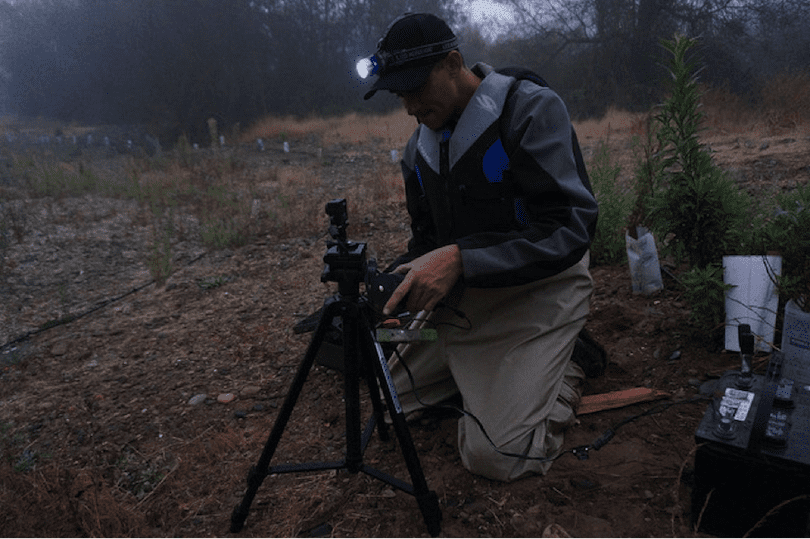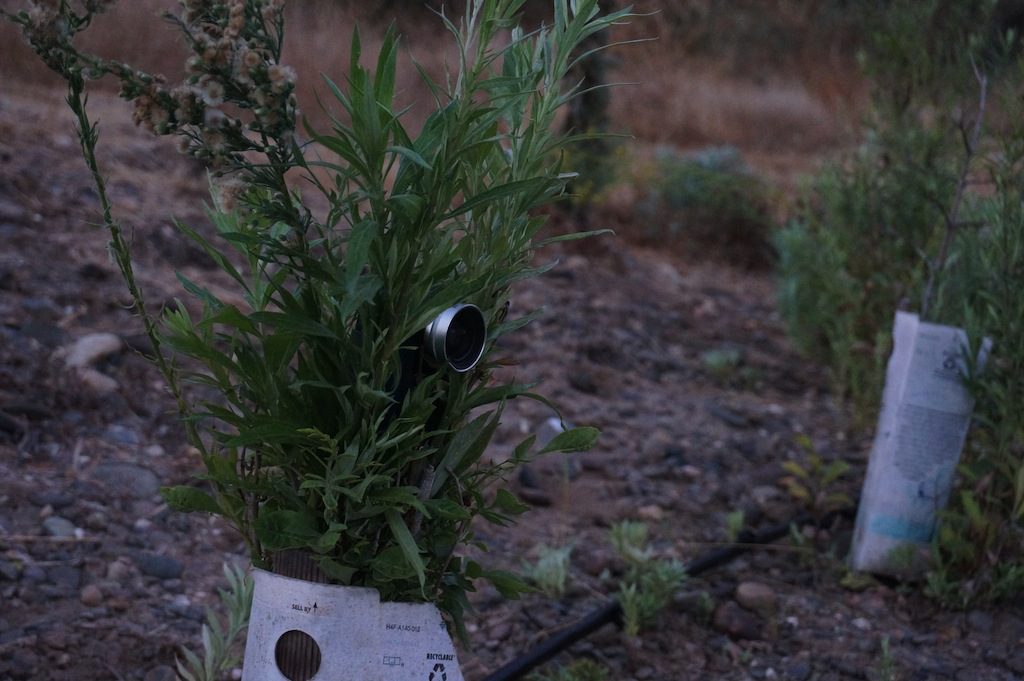Friday December 19, 2014

In our typical fashion of experimentation, we often enjoy trying new techniques to capture photos and video in the field. Time-lapse photography is a fun method that takes a normally slow occurrence, which would be uninteresting to watch in real time, and turns it into a fast-paced video. An event lasting hours, days, or even months can be squeezed into mere seconds. Time-lapse uses a camera with an internal or external timer to trigger taking photos at regular intervals. The photos are then rendered into a video playing the images at 24 or 30 frames per second.
We recently visited one of our restoration sites at Honolulu Bar on the Stanislaus River to set up a time-lapse camera. In the photo above, one of our technicians is hanging a power inverter on the tripod. The inverter is hooked up to as 12-volt car battery, and we can use it to plug in a GoPro camera. Since GoPro batteries only last about two hours, this setup allows us to run the camera for over a week on a fully charged car battery. We also tried some other creative angles, like placing cameras to capture a plant’s “view” of the floodplain.

We set up the cameras to record water inundating the restored floodplain as the river flow increased over a period of a day. We then reduced the photos taken at 1-minute intervals over the course of 12 hours (from sunrise to sunset) into 30 seconds of video. In this way, water creeping across land at inches per hour could become a more interesting part of our video featuring the habitat restoration project. We also deployed a couple of time-lapse cameras to collect footage of salmon spawning in a gravel bar, and of a salmon carcass decaying.
To see how the floodplain timelapse turned out, zip to 10:52 of our Honolulu Bar video below (or just watch the whole video while you’re at it!).
